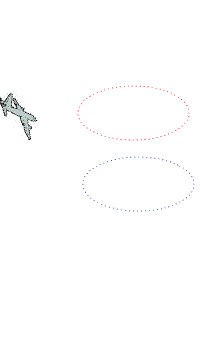Light Beacons to Radio Beacons
However, with improvements in airplanes from Orville and Willbur Wright's first flight in 1903 to the dawn of Jet Age in 1930 and supersonic aircrafts in 1968 , lot of newer gadgets came into being to ease Air Traffic Control.
It started with humble introduction of Light Beacons. In 1921, the US Army deployed rotating beacons in a line between Columbus and Dayton, Ohio, a distance of about 80 miles. The beacons, visible to pilots at 10-second intervals, made it possible to fly the route at night. The US Post Office took over the operation of the guidance system the following year, and by the end of 1923 constructed similar beacons between Chicago and Cheyenne, WY, a line later extended coast-to-coast .
Another development of enormous importance to aviation was radio. Aviation and radio developed almost in lock step. Marconi sent his first message across the Atlantic on the airways just two years before the Wright Brothers' first flight at Kitty Hawk. By World War I, some pilots were taking radios up in the air with them so they could communicate with people on the ground. The airlines followed suit after the war, using radio to transmit weather information from the ground to their pilots so they could avoid storms.

Perhaps an even bigger development, however, wHolding Stackas the realization that radio could be used as an aid to navigation when visibility was poor and visual navigation aids such as beacons were useless. Once technical bugs were worked out, the US Department of Commerce constructed 83 radio beacons across the USA. They became fully operational in 1932, automatically transmitting directional beams, or tracks, that pilots could follow to their destination. Marker beacons came next, allowing pilots to locate airports in poor visibility. These beacons in the form of NDB and VOR provide the homing and holding facility to the aircraft.
